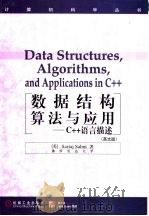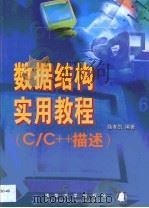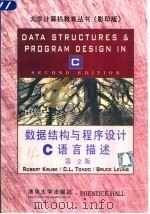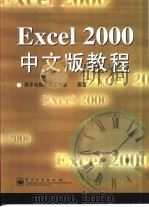《数据结构算法与应用 C++语言描述 英文版》
| 作者 | (美)塞尼(Sartaj Sahni)著 编者 |
|---|---|
| 出版 | 北京:机械工业出版社 |
| 参考页数 | 824 |
| 出版时间 | 1999(求助前请核对) 目录预览 |
| ISBN号 | 7111070178 — 求助条款 |
| PDF编号 | 88812278(仅供预览,未存储实际文件) |
| 求助格式 | 扫描PDF(若分多册发行,每次仅能受理1册) |

Chapter 1 Programming in C++1
CHAPTER 1 PROGRAMMING IN C++1
PARTⅠ PRELIMINARIES1
PATR ⅠPRELIMINARIES1
1.2.1 Value Parameters3
1.2 Functions and Parameters3
1.1 Introduction3
1.2.2 Template Functions4
1.2.3 Reference Parameters5
1.2.4 Const Reference Parameters6
1.2.5 Return Values7
1.2.6 Recursive Functions8
1.3.1 The Operator new14
1.3 Dyanmic Memory Allocation14
1.3.2 One-Dimensional Arrays15
1.3.3 Exception Handling15
1.3.4 The Operator delete16
1.3.5 Two-Dimensional Arrays17
1.4.1 The Class Currency20
1.4 Classes20
1.4.2 Using a Different Representation28
1.4.3 Operator Overloading29
1.4.4 Throwing Exceptions32
1.4.5 Friends and Protected Class Members33
1.4.6 Addition of#iEndef,#define,and#endif Statements36
1.5 Testing and Debugging37
1.5.1 What Is Testing?37
Roots of a quadratic37
1.5.2 Designing Test Data40
Finding the maximum element40
1.5.3 Debugging43
1.6 References and Selected Readings44
CHAPTER 2 PROGRAM PERFORMANCE45
Chapter 2 Program Performance++45
2.1 Introduction47
2.2 Space Complexity48
2.2.1 Components of Space Complexity48
2.2.2 Examples54
2.3 Time Complexity57
2.3.1 Components of Time Complexity57
2.3.2 Operation Counts58
2.3.3 Step Counts68
2.4 Asymptotic Notation(O,(,(,o)83
2.4.1 Big Oh Notation(O)84
2.4.2 Omega Notation(()88
2.4.3 Theta Notation(()89
2.4.4 Little Oh(o)90
2.4.5 Properties91
2.4.6 Complexity Analysis Examples91
Binary search91
2.5 Practical Complexities98
2.6 Performance Measurement102
2.6.1 Choosing Instance Size102
2.6.2 Developing the Test Data103
2.6.3 Setting Up the Experiment104
2.7 References and Selected Readings110
Chapter 3 Data Representation111
PART Ⅱ DATA STRUCTURES111
CHAPTER 3 DATA REPRESENTATION111
PART Ⅱ DATA STRUCTURES111
3.1 Introduction113
3.2 Linear Lists114
3.3 Formula-Based Representation116
3.3.1 Representation116
3.3.2 The Exception Class NoMem117
3.3.3 Operations118
3.3.4 Evaluation122
3.4 Linked Representation129
3.4.1 The Classes ChainNode and Chain129
3.4.2 Operations130
3.4.3 Extensions the Class Chain136
3.4.4 A Chain Iterator Class137
3.4.5 Circular List Representation138
3.4.6 Comparison with Formula-Based Representation139
3.4.7 Doubly Linked List Representation140
3.4.8 Summary142
3.5 Indirect Addressing146
3.5.1 Representation146
3.5.2 Operations147
3.6 Simulating Pointers152
3.6.1 SimSpace Operations153
3.6.2 Chains Using Simulated Pointers157
3.7 A Comparison163
3.8 Applications164
3.8.1 Bin Sort164
3.8.2 Radix Sort170
3.8.3 Equivalence Classes173
3.8.4 Convex Hull180
3.9 References and Selected Readings188
CHAPTER 4 ARRAYS AND MATRICES189
Chapter 4 Arrays and Matrices189
4.1 Arrays191
4.1.1The Abstract Data Type191
4.1.2 Indexing a C++Array192
4.1.3 Row-and Column-Major Mappings192
4.1.4 The Class Array1D194
4.1.5 The Class Array2D197
4.2 Matrices204
4.2.1 Definitions and Operations204
4.2.2 The Class Matrix206
4.3 Special Matrices210
4.3.1 Definitions and Applications210
4.3.2 Diagonal Matrices212
4.3.3 Tridiagonal Matrix214
4.3.4 Triangular Matrices216
4.3.5 Symmetric Matrices218
4.4 Sparse Matrices221
4.4.1 Motivation221
4.4.2 Array Representation222
4.4.3 Linked Representation229
CHAPTER 5 STACKS239
Chapter 5 Stacks239
5.1 The Abstract Data Type241
5.2 Derived Classes and Inheritance241
5.3 Formula-Based Representation243
5.4 Linked Representation248
5.5 Applications252
5.5.1 Parenthesis Matching252
5.5.2 Towers of Hanoi254
5.5.3 Rearranging Railroad Cars256
5.5.4 Switch Box Routing263
5.5.5 Offline Equivalence Problem264
5.5.6 Rat in a Maze268
5.6 References and Selected Readings281
CHAPTER 6 QUEUES283
Chapter 6 Queues283
6.1 The Abstract Data Type285
6.2 Formula-Based Representation286
6.3 Linked Representation292
6.4 Applications297
6.4.1 Railroad Car Rearrangement297
6.4.2 Wire Routing299
6.4.3 Image Component Labeling306
6.4.4 Machine Shop Simulation309
6.5 References and Selected Readings324
CHAPTER 7 SKIP LISTS AND HASHING325
Chapter 7 Skip Lists and Hashing325
7.1 Dictionaries327
7.2 Linear List Representation328
7.3 Skip List Representation332
7.3.1 The Ideal Case332
7.3.2 Insertions and Deletions334
7.3.3 Assigning Levels335
7.3.4 The Class SkipNode336
7.3.5 The Class SkipList337
7.3.6 Complexity342
7.4 Hash Table Representation343
7.4.1 Ideal Hashing343
7.4.2 Hashing with Linear Open Addressing344
7.4.3 Hashing with Chains350
7.5 An Application—Text Compression357
7.5.1 LZW Compression358
7.5.2 Implementation of LZW Compression359
7.5.3 LZW Decompression364
7.5.4 Implementation of LZW Decompression365
7.6 References and Selected Readings370
CHAPTER 8 BINARY AND OTHER TREES371
Chapter 8 Binary and Other Trees371
8.1 Trees373
8.2 Binary Trees378
8.3 Properties of Binary Trees379
8.4.1 Formula-Based Representation382
8.4 Representation of Binary Trees382
8.4.2 Linked Representation383
8.5 Common Binary Tree Operations385
8.6 Binary Tree Traversal386
8.8 The Class BinaryTree391
8.7 The ADT BinaryTree391
8.9 ADT and Class Extensions392
8.9.3 Height397
8.9.2 Delete397
8.9.1 Output397
8.9.4 Size398
8.10.1 Placement of Signal Boosters400
8.10 Applications400
8.10.2 Online Equivalence Classes405
8.11 References and Selected Readings416
Chapter 9 Priority Queues417
CHAPTER 9 PRIORITY QUEUES417
9.1 Introduction419
9.2 Linear Lists421
9.3 Heaps421
9.3.1 Definitions421
9.3.2 Insertion into a Max Heap423
9.3.3 Deletion from a Max Heap424
9.3.4 Max Heap Initialization424
9.3.5 The Class MaxHeap425
9.4 Liftist Trees432
9.4.1 Height-and Weight-Biased Min and Max Leftist Trees432
9.4.3 Deletion from a Max HBLT435
9.4.4 Melding Two Max HBLTs435
9.4.2 Insertion into a Max HBLT435
9.4.5 Initialization437
9.4.6 The Class MaxHBLT438
9.5 Applications444
9.5.1 Heap Sort444
9.5.2 Machine Scheduling444
9.5.3 Huffman Codes450
9.6 References and Selected Readings457
CHAPTER 10 TOURNAMENT TREES459
Chapter 10 Tournament Trees459
10.1 Introduction461
10.2 The ADT WinnerTree466
10.3 The Class WinnerTree466
10.3.1 Representation466
10.3.2 Class Specification467
10.3.3 Constructor,Destructor,and Winner467
10.3.4 Initializing a Winner Tree468
10.3.5 Replaying Matches471
10.4 Loser Trees472
10.5.1 Bin Packing Using First Fit472
10.5 Applications474
10.5.2 Bin Packing Using Next Fit480
Chapter 11 Search Trees485
CHAPTER 11 SEARCH TREES485
11.1 Binary Search Trees488
11.1.1 Definition488
11.1.2 The ADTs BSTree and IndexedBSTree490
11.1.3 The Class BSTree491
11.1.4 Searching492
11.1.5 Inserting an Element493
11.1.6 Deleting an Element493
11.1.8 Height of a Binary Search Tree496
11.1.7 The Class DBSTree496
11.2 AVL Trees500
11.2.1 Definition500
11.2.2 Height of an AVL Tree501
11.2.3 Representation of an AVL Tree501
11.2.4 Searching an AVL Search Tree502
11.2.5 Inserting into an AVL Search Tree502
11.2.6 Deletion from an AVL Search Tree506
11.3.1 Definition510
11.3 Red-Black Trees510
11.3.2 Representation of a Red-Black Tree512
11.3.3 Searching a Red-Black Tree512
11.3.4 Inserting into a Red-Black Tree513
11.3.5 Deletion from a Red-Black Tree518
11.3.6 Implementation Considerations and Complexity521
11.4 B-Trees524
11.4.1 Indexed Sequential Access Method524
11.4.2 m-way Search Trees525
11.4.3 B-Trees of Order m528
11.4.4 Height of a B-tree529
11.4.5 Searching a B-tree530
11.4.6 Inserting into a B-tree530
11.4.7 Deletion from a B-tree533
11.4.8 Node Structure537
11.5 Applications539
11.5.1 Histogramming539
11.5.2 Best-Fit Bin Packing543
11.5.3 Crossing Distribution546
11.6 References and Selected Readings553
Chapter 12 Graphs555
CHAPTER 12 GRAPHS555
12.1 Definitions557
12.2 Applications558
12.3 Properties562
12.4 The ADTs Graph and Digraph565
12.5 Representation of Graphs and Digraphs567
12.5.1 Adjacency Matrix567
12.5.2 Packed-Adjacency Lists569
12.5.3 Linked-Adjacency Lists570
12.6 Representation of Networks573
12.7 Class Definitions575
12.7.1 The Different Classes575
12.7.2 Adjacency-Matrix Classes576
12.7.3 An Extension to the Class Chain580
12.7.4 The Class LinkedBase580
12.7.5 Linked Classes581
12.8 Graph Iterators588
12.8.1 Specification588
12.8.2 Iterator Functions for Adjacency-Matrix Representations589
12.8.3 Iterator Functions for Linked-Adjacency Lists589
12.9 Language Features592
12.9.1 Virtual Functions and Polymorphism592
12.9.2 Pure Virtual Functions and Abstract Classes595
12.9.3 Virtual Base Classes596
12.9.4 Abstract Classes and Abstract Data Types598
12.10 Graph Search Methods600
12.10.1 Breadth-First Search600
12.10.3 Implementation of Network::BFS602
12.10.4 Complexity Analysis of Network::BFS602
12.10.2 The Class Network602
12.10.5 Depth-First Search605
12.11 Applications Revisited607
12.11.1 Finding a Path607
12.11.2 Connected Graphs and Components609
12.11.3 Spanning Trees611
PART Ⅲ ALGORITHM-DESIGN METHODS615
Chapter 13 The Greedy Method615
CHAPTER 13 THE GREEDY METHOD615
PART Ⅲ ALLGORITHM-DESIGN METHODS615
13.1 Optimization Problems617
13.2 The Greedy Method618
13.3 Applications623
13.3.1 Container Loading623
13.3.2 0/1 Knapsack Problem624
13.3.3 Topological Sorting628
13.3.4 Bipartite Cover633
13.3.5 Single-Source Shortest Paths642
13.3.6 Minimum-Cost Spanning Trees646
13.4 References and Selected Readings659
Chapter 14 Divide and Conquer661
CHAPTER 14 DIVIDE AND CONQUER661
14.1 The Method662
14.2 Applications672
14.2.1 Defective Chessboard672
14.2.2 Merge Sort677
14.2.3 Quick Sort682
14.2.4 Selection688
14.2.5 Closest Pair of Points691
14.3 Solving Recurrence Equations703
14.4 Lower Bounds on Complexity705
14.4.1 Lower Bound for the Minmax Problem706
14.4.2 Lower Bound for Sorting708
CHAPTER 15 DYNAMIC PROGRAMMING711
Chapter 15 Dynamic Programming711
15.1 The Method712
15.2 Applications715
15.2.1 0/1 Knapsack Problem715
15.2.2 Image Compression719
15.2.3 Matrix Multiplication Chains724
15.2.4 All Pairs Shortest Paths731
15.2.5 Noncrossing Subset of Nets735
15.2.6 Component Folding740
15.3 References and Selected Readings749
Chapter 16 Backtracking751
CHAPTER 16 BACKTRACKING751
16.1 The Method753
16.2.1 Container Loading760
16.2 Applications760
16.2.2 0/1 Knapsack Problem769
16.2.3 Max Clique772
16.2.4 Traveling Salesperson775
16.2.5 Board Permutation778
Chapter 17 Branch and Bound787
CHAPTER 17 BRANCH AND BOUND787
17.1 The Method788
17.2 Applications792
17.2.1 Container Loading792
17.2.2 0/1 Knapsack Problem802
17.2.3 Max Clique805
17.2.4 Traveling Salesperson807
17.2.5 Board Permutation810
INDEX817
INDEX817
1999《数据结构算法与应用 C++语言描述 英文版》由于是年代较久的资料都绝版了,几乎不可能购买到实物。如果大家为了学习确实需要,可向博主求助其电子版PDF文件(由(美)塞尼(Sartaj Sahni)著 1999 北京:机械工业出版社 出版的版本) 。对合法合规的求助,我会当即受理并将下载地址发送给你。
高度相关资料
-

- 数据结构与算法-C语言程序设计
- 1988 上海:上海交通大学出版社
-

- 数据结构题集(C语言版)
- 1999
-

- 数据结构:C++语言描述
- 2020
-

- 数据结构C++语言描述
- 1998
-

- 数据结构导学:C 语言描述
- 华中科技大学出版社
-

- 数据结构:C 语言描述
- 华中科技大学出版社
-

- 数据结构:使用C语言
- 1998年11月第1版 电子科技大学出版社
-

- 数据结构 C++ 语言描述 英文
- 1997 清华大学出版社
-

- C/C++与数据结构
- 1997 杭州:浙江大学出版社
-

- 数据结构 使用C语言
- 1993 北京:科学出版社
-

- 数据结构实用教程 C/C++描述
- 1999 北京:清华大学出版社
-

- 数据结构与程序设计 C 语言描述 第2版 英文
- 1998 北京:清华大学出版社
-

- Excel 2000中文版教程
- 1999 北京:电子工业出版社
提示:百度云已更名为百度网盘(百度盘),天翼云盘、微盘下载地址……暂未提供。➥ PDF文字可复制化或转WORD

